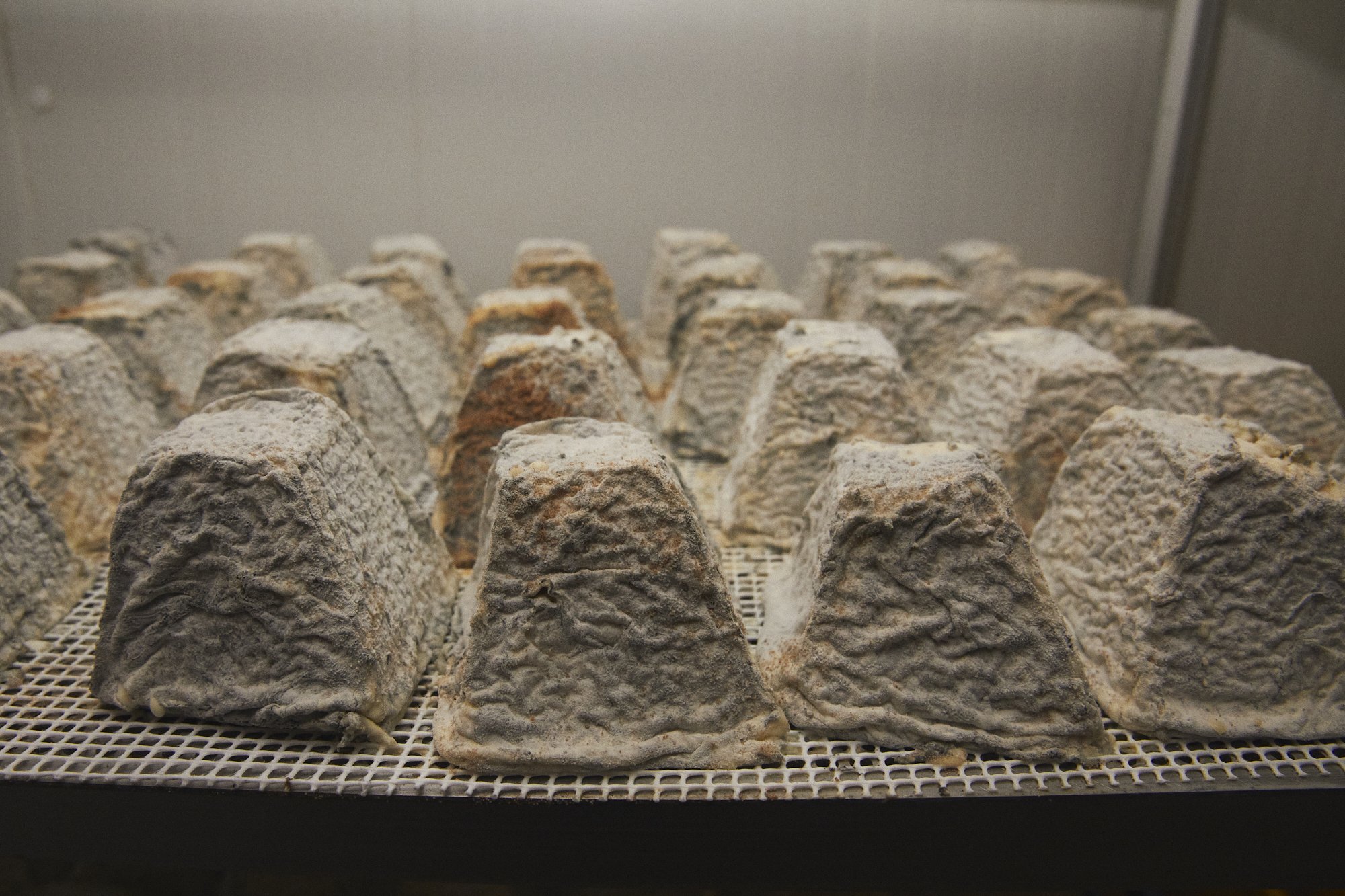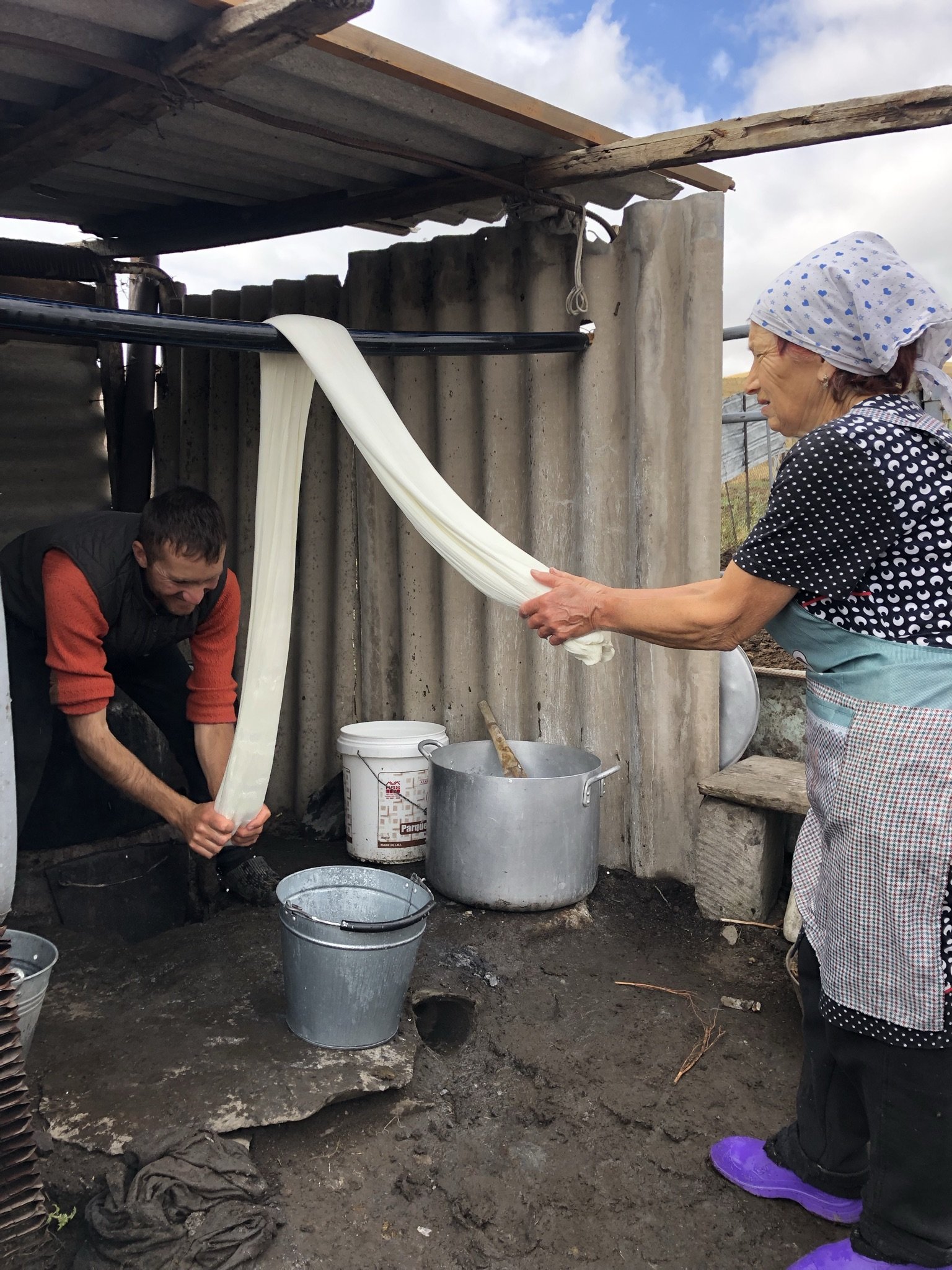Disclaimer: While I focus on cheeses made from raw milk, I am not a fundamentalist about this. I will demonstrate the making of ricotta, which involves temperatures well above pasteurization. I want to go beyond the raw/pasteurized dichotomy. More info
I will discuss methods of using kefir and clabber with pasteurized milk, in situations where healthy raw milk cannot be obtained.
Core curriculum
-
basics of cheese science and milk microbes
Students will build a base knowledge about the constituents of milk, how microbes ferment milk, and what coagulation is. We focus on sourcing the highest quality, fresh raw milk. Great cheese starts on the farm.
-
making natural starters
The crux of the course is sharing methods of making and maintaining starter cultures from the microbes indigenous to healthy raw milk. Essentially any general category of cheese can be made from clabber or kefir.
-
Making Fresh and ripened cheeses
The workshops are geared towards those who want to make cheese in their homes, on farms, or in restaurants. The methods demonstrated empower students to make and age cheese without a lot of expensive equipment.

milk wants to be cheese.
we are simply steering it down its many possible paths.
with respEcT for microbes, livestock, landsCapes, and our bodies.
areas of focus
What factors lead to good cheese milk, how milk microbes behave, which methods are available for steering the fermentation.
How to make and use rennet and plant coagulants. How the choice of coagulant shapes the cheese flavor and texture.
By seeing, smelling, touching, and tasting the process, students are participating with microbes and fermentation in a multi-sensory experience. I advocate training the senses, as a foundation that can lead to students becoming competent makers.
Methods of making lactic (chevre) and stretched curd styles (mozzerella), to be aged or eaten fresh, Feta, and Ricotta. The specific styles may vary, depending on available milk, and climate. We may also make Tomme or Halloumi.
What common tools and DIY equipment can be used to make and age cheese, natural materials for cheese shaping and storage.
Teaching approach
By combining multiple styles of learning, we will build a synergistic learning process that works with a wide audience.
-
To begin to learn this craft, it is important to see cheese being made, to observe the hand motions, layout of equipment, and flow of tasks. This is a crucial benefit of the in-person, intimate, small class setting.
-
While I demonstrate, students get to engage all their senses. We will put our hands in the curd, taste and smell every step of the process. By learning to use our senses intentionally, we can build confidence and allow them to guide us in our cheesemaking and beyond.
-
I will share how the methods work, how I learned them, and how students can adapt them to their circumstances. I present certain blocks seminar style combining science with practical knowledge, and also provide space for questions and collaboration.
-
Behind the practical instruction is a deeper message. This is inspired by the paradigm shift happening as we learn that microbial communites are at the root of human and ecological health. Through milk fermentation, we are moving toward reclaiming a role of collaboration with microbes, with livestock, with life.
Documents
for hosts and students
general overview
A basic description of my approach to the five and two day workshops, what the core approaches and teaching styles are.
2 day yogurt and kefir workshop: description and host details
Sensory reclamation through milk fermentation. This shorter course on probiotic sour milks and their cultures focuses on sharpening our senses and comparing sour milk to other fermentations (sourdough, beer, wine, kombucha).
5 day cheesemaking workshop: Host details and sample outline
What I would require from a host, how it would be setup, milk sourcing, and equipment needed. Email me to express interest in hosting.











